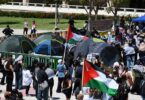Alexandra Kovalskaya
The seizure of power in Afghanistan by the Taliban (a terrorist organization banned in Russia ) instilled fear not only in their ideological opponents, but also in ordinary citizens. In Afghanistan, the Taliban have practically no enemies left, but the new authorities have not decided what to do with the remaining militants. This is not an easy task, because over the years of armed confrontation, the only thing these people have learned is to fight. Today in Kabul, there are several field commanders for each region, and each of them believes that he is the main one. With such a concentration of bored armed people, it becomes more difficult to control the situation. Moreover, the Afghans still remember well what life was like under the Taliban in the late 1990s. Correspondent “Lenta.ru” Alexandra Kovalskaya traveled from the Afghan-Uzbek border to Kabul to find out how Afghanistan lives after the victory of the Taliban, how ordinary Afghans are adapting to a new life, and is it true that the Taliban love Russia.
New world
On the bridge of Friendship, prayer rugs are spread. Thirty-two years ago, Soviet troops left Afghanistan across the Amu Darya River, and today the deputy governor of Balkh province is praying here with his guests. The border crossing won’t open until they finish. A line of cars is waiting in front of the checkpoint (checkpoint), and behind the bars, where the territory of Afghanistan begins, Taliban militants are drinking tea and laughing at something. Some are reminiscent of Pakistanis – their clothes are of a different cut, their hair and beards are much longer, and the pakol – a headdress also known as a dushmanka – differs from the hats of their Afghan “colleagues.”
Regular air traffic between Afghanistan and the rest of the world has not resumed, despite repeated promises by the Taliban. But there was an opportunity to drive along dusty roads and see with your own eyes how the country lives, which has received the long-awaited peace after decades of civil war.
On the Uzbek side of the Amu Darya, border guards warned that the Taliban would not let everyone in, and even then only after a long check. However, the inspection takes about 15 minutes. The militants, apparently not yet accustomed to their new role, look into the trunk, shine through the suitcase and, after a few questions about the purpose of the visit and their occupation, put a stamp on crossing the border.
Contrary to stereotypes, I, the only woman and the only foreigner at the Termez-Hairaton crossing, smile and even help to lift the luggage onto the X-ray tape. Afghanistan’s new masters are adamant about only one thing – no photos at the border crossing
A gray-bearded Taliban, sitting at the exit, hugging a machine gun, waves his hand goodbye, and our car leaves for the state, which is only one and a half months old – the Islamic Emirate of Afghanistan.
The road to Mazar-i-Sharif, the administrative center of Balkh province, resembles shots from a science fiction film: dusty land scorched by the sun stretches to the very horizon, where you can occasionally come across empty houses and abandoned military bases. There are almost no cars and people in this world, only half an hour from the city there are lonely figures – men collecting scrap metal, and children begging for alms.
“But today is Saturday, it’s like your Monday,” my driver says. When asked where they all went, he shrugs: “We ran away. When the Taliban took Kabul, people rushed to the border and to the airport. Many people, tens of thousands. Do not be surprised that now it is so empty – those who have not escaped are hiding, especially if they served in the army or the police. They say that the Taliban will be executed for this. “
Tea, pigeons and trigger finger
Mazar-i-Sharif is a small city. In the center is the famous Blue Mosque, where, according to legend, the Shiite saint Imam Ali is buried and where hundreds of white doves live. Around the bazaar, residential areas and several diplomatic missions, which are now closed.
In the office of information and culture, we have to wait again. The reason is the same: the boss who issues work permits to the foreign press reads namaz. His empty office bears a white Taliban flag, and the rest of the furnishings – a table, bookcases and leather sofas – are clearly inherited from their former owners.
First of all, we are offered tea, this is the immutable law of Afghan hospitality. Obtaining the necessary paper, as well as the inspection at the border, takes no more than 15 minutes, and together with the permit I am given two guards who will accompany me on my walks around the city. Their presence is explained as follows: the safety of guests is paramount.
One of the information staff in good English offers to help me with the photo. I’m trying to joke that no one in Moscow would believe in such friendliness of the Taliban.
“I’m not a Taliban,” my interlocutor replies. – I worked here under Ashraf Ghani (the current president of Afghanistan, who left the country after the coup – approx. “Lenta.ru” ), and now I continue under the new government. Nothing has changed for me.
– And you are not afraid?
He shrugs with a smile.
– No. Now my bosses are no worse than they were before.
In the courtyard of the mosque, dozens of militants stroll along the marble polished centuries before the mirror shine. There are those who look 15-16 years old. They immediately explain to me that these teenagers never took part in the war, but here they just look after the weapons of their older brothers while they pray. We have to take our word for it. Many pose for a photo with their fingers on the trigger of a machine gun, and jokingly point their weapons at each other. Since August 15, many accidents have occurred in Afghanistan due to the careless handling of weapons, but, of course, no one was involved in any statistics.
During the half hour that I spent inspecting the mosque, all local leaders, including the head of the security service, approached me to meet you. The tour ends with an inevitable tea party and an impromptu interview: I am asked to ask questions, this opportunity cannot be ignored. The main respondents are the older and higher-ranking Taliban. I was warned not to talk to the rank and file, because they are “insufficiently informed.” The conversation turns out to be polite and evasive.
“Isn’t it forbidden for you to talk to a woman who, moreover, does not cover her face?
– You are a guest, how can you offend a guest? – answer my question with a question. – Covering your face or not is a personal choice. We cannot insist on this.
– But a couple of weeks ago, Western journalists told the following: Taliban commanders refuse to talk to them because they do not wear hijab …
– Can’t an official in any other country refuse to talk to someone? There are enough such people everywhere. Who Said We Limit Women’s Rights? They can go back to work whenever they want. They can return to school when the situation returns to normal. Even women work at the local airport, you can see for yourself.
If even half of what I was told about is true, then the situation in Afghanistan has changed for the better. But not everyone believes in this: hotels in Mazar-i-Sharif are overflowing with those who hope to leave the country as soon as passenger flights resume.
Twelve hours without adventure
A couple of months ago, there was no question of driving from the northern border to Kabul – local battles between the Taliban and government forces were raging along the road. However, now the road is practically safe, and a peaceful life is going on on the side of the road.
We leave Mazar-i-Sharif at five in the morning and reach Kabul at five in the evening. The main difficulty for all this time is the repair work and traffic jams on the Salang pass. The fact that something is now being repaired on Salang seems rather reassuring, and workers in brightly colored vests and excavators are not what you usually see in Afghan news reports.
At the entrance and exit from cities and at crossroads, there are Taliban checkpoints – a dozen militants and a white banner. Cars slow down, and young people with long beards and Kalashnikovs at the ready ask the drivers where they are going from and where. This is where the check usually ends, and if there is a woman in the car, then it is passed without question. The same thing happened later, already in Kabul: I was asked to move to the front seat in order to pass the checkpoint as soon as possible. “You are our passport,” my Afghan assistants joked.
Motorcycles and jeeps are parked at the checkpoints, which a couple of months ago belonged to the Afghan National Army. Now they are repainted from khaki to white, and the emblem of the emirate appeared on the side instead of the Afghan tricolor
One of these SUVs, decorated with artificial flowers, overtakes us in the Charikar area. Surahs in Arabic are played from the speakers on the roof. In Baghlan province, the landscape becomes almost idyllic – the fields are harvested and raked into haystacks. However, I am warned not to approach the locals and take pictures of them.
– Why?
– There may be mines near the road. And many more had relatives killed in these places at the hands of the Americans. It is difficult to say how people will react to the appearance of a Westerner.
These warnings, like the two-meter crater on the road, where an army jeep was blown up by a mine, a destroyed police station, and burned-out police cars stacked on top of each other remind of the war. And yet, twelve hours’ journey, it is hard to believe that Afghanistan was at war only a month and a half ago. However, this country has always been able to rise from the ashes.
“Russia is good!”
At sunset we enter Kabul. It seemed that after the panic that gripped the city with the arrival of the Taliban, after the flight of the president and the hell that unfolded in the Kabul airport, after a month of uncertainty and fear, Kabul should have changed beyond recognition, but no.
The Afghan capital has remained the same as I saw it six months ago: the same vanity, the same traffic jams, the same kites in the sky. The Taliban, dressed in army uniforms, are often indistinguishable from the government soldiers who stood here before them.
However, it is possible that in the current army and police there are many of those who were there under Ashraf Ghani – the Taliban invited them to return to service.
At first glance, everything is the same. There are many women on the streets, many of them still have open faces, and even most of the graffiti in the city center has not been damaged – the Taliban managed to paint over only a few of them, overwriting calls for patriotism and quotes from the Koran. Shops and cafes also work, people are smiling in the same way.
But I know that even now there are those who are hiding, awaiting arrest. Those who dream of leaving the country as soon as possible and stand in lines at several working embassies. Those for whom Afghanistan ended on August 15. Those whose dreams will no longer come true. Those who are waiting at the border with Iran or Pakistan, hoping to cross it. Those who live in hastily created refugee camps in Kabul parks
But until new laws and bans come into force, Kabul is resilient. The key word is for now. It is difficult to predict what will happen next. After Kabul was taken by the Taliban in one day, predicting Afghan scenarios is a thankless task.
At the next checkpoint in the city center, my documents are checked for the first time.
– Where? USA? – Asks the Taliban, wrapped up to the eyes in a black kerchief.
– Russia, – I answer.
– Russia is good, Russia is a friend, – he says in broken English and makes a gesture – go through.
At first glance, everything is the same in Kabul. Only the tricolor, the flag of the Islamic Republic of Afghanistan, entangled in barbed wire, reminds us that something is gone forever.
Courtesy: (lenta.ru)






